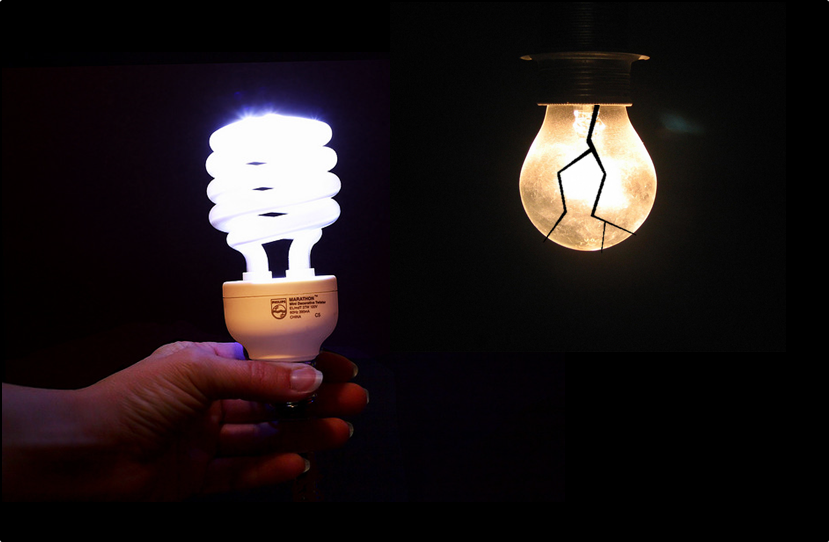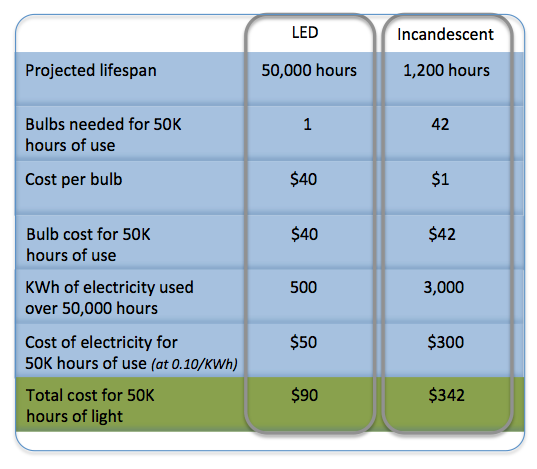Editor’s note: April Dávila of Civic Business Journal discusses the benefits of negawatts—or units of power saved rather than expended—and the potential cost savings for cities should they turn their attention towards energy cost-saving measures.
* * *
Originally posted at Civic Business Journal.
By April Dávila.
Consider the infrastructure involved in producing energy. Whether we get our kilowatts from coal, natural gas, nuclear plants or renewable sources we must mine, drill, contain, maintain, or build… with significant investment involved.
We go to great lengths to create our kilowatts, often forgetting that the average end user has very little concern for how much energy is created in the field. As Amory Lovins stated in his now-famous paper from 1990 called The Negawatt Revolution: “Customers don’t want kilowatt-hours; they want services such as hot showers, cold beer, lit rooms, and spinning shafts, which can come more cheaply from using less electricity more efficiently.” His report introduced the term negawatt as a measurement of energy saved.
Lovins proposed that increased creation of electricity might not be the solution to future energy woes. Instead, he suggested that companies could save up to 50% of their energy by being more efficient. Instead of spending money to create energy, focusing on conservation creates massive opportunities for bigger profits.
At the time that Lovins wrote his paper, the incandescent bulb was the standard technology on the scene for illumination. Since then, LED bulbs have made their debut, and created new opportunities for savings. Cities need no longer settle for 50% savings. These days, an energy savings of 85% is as easy as swapping out old bulbs. Consider a comparison of traditional lights and LED bulbs.
Of course these numbers are based on estimates. Costs may vary, as will life span of any particular bulb, but even given a wide margin of error, the potential cost savings are tremendous.
For a building like a city courthouse, with roughly 1,500 bulbs, swapping in LED lights would produce an estimated cost savings of about $378,000 over the course of 50,000 hours of use. And that’s not considering lowered maintenance costs and heat mitigation.
Incandescent bulbs have to be replaced about every 12-18 months. Even the most expedient maintenance worker needs roughly 5 minutes to retrieve a ladder and replace a bulb. Over the course of 18 months, that adds up to 125 hours of work for our 1,500-light courthouse.
In Southern California, where keeping our work spaces cool and comfortable is a considerable challenge, switching to LED lights can further save energy by reducing our air conditioning costs. An LED bulb gives off just 3.4btu of heat per hour, compared to 85btu/hour given off by incandescent bulbs.
Now broaden our prospective to consider energy usage outside the city’s courthouse. For example, consider how much energy goes into keeping our cities lit at night. Municipalities spend as much as 60% of their electricity bill on street lighting alone. In January of 2013, the City of Los Angeles began an effort to swap out their old streetlights with LED bulbs for an estimated $7 million in electricity savings and another $2.5 million in avoided maintenance costs. Cities large and small in Southern California are looking seriously at the huge energy and operational savings opportunity to retrofit their existing street lighting systems. The economics are compelling.
Climatec, an energy solutions provider, is at the forefront of efforts to increase efficiency. “It is always cheaper to save a kilowatt-hour than create a kilowatt-hour,” said Vice President Thomas Jackson. “Looking at the investments needed to create more energy with dams, power plants, or even alternative energy and then comparing those costs to the act of simply increasing the efficiency of the end user facilities….the choice seems clear. It never makes sense to generate more energy, when many municipal facilities have dated and inefficient heating, cooling, lighting and other energy-consuming equipment. Conservation and efficiency is always the “low hanging fruit”.
Focusing on negawatts instead of kilowatts is more sustainable both environmentally and economically. “Once you have reached 90-95% efficiency with your measured energy usage in facilities,” said Jackson, “then we should shift our focus back to efficient and green generation of kilowatts.” Until then, we can all make a tremendous difference by simply focusing our efforts on negawatts, one light bulb and one thermostat at a time.






